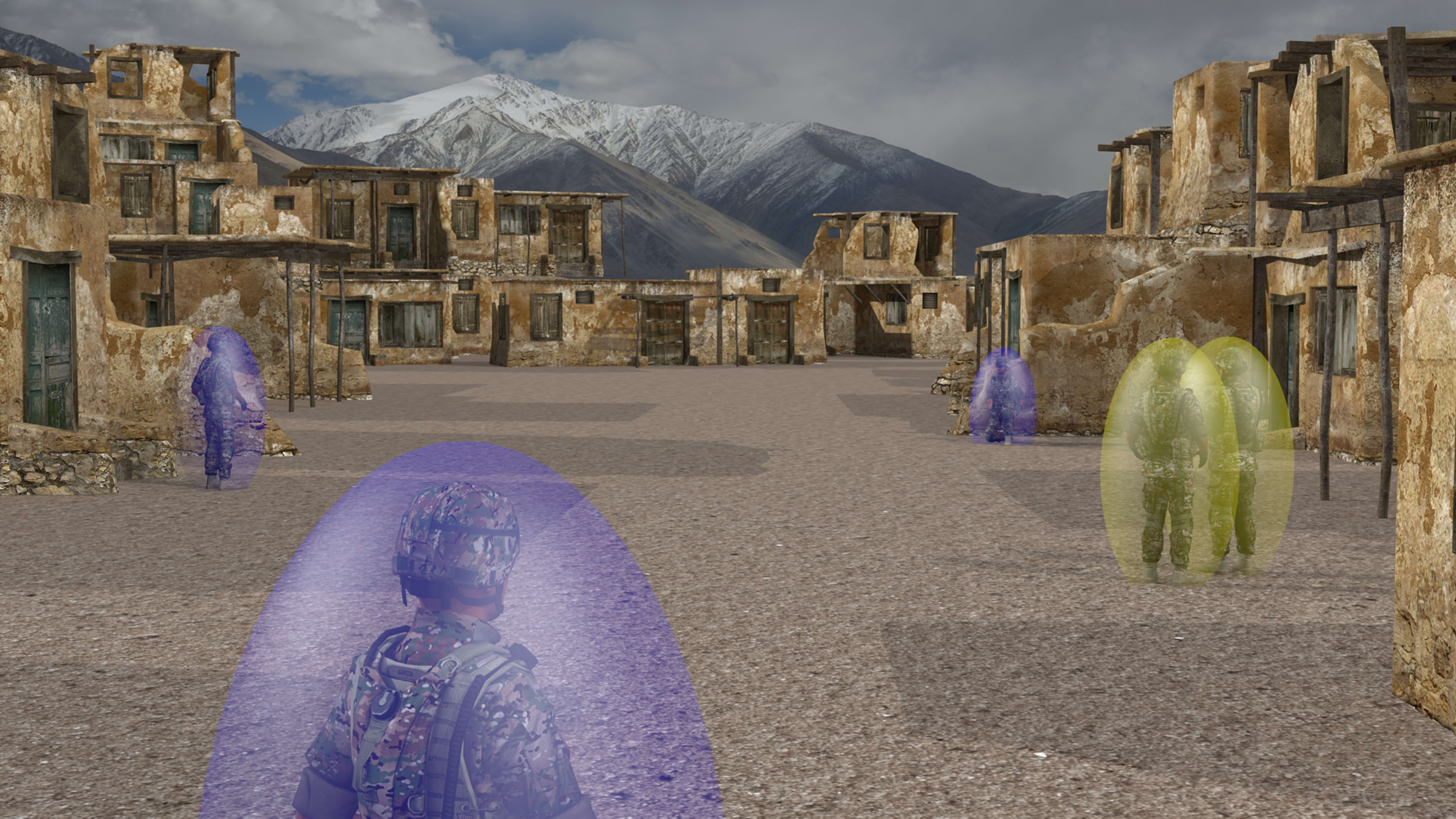When soldiers are in combat, they have countless reasons to communicate with others, and numerous sensors monitoring their health—but every motive not to want the enemy to intercept any of that data.
That’s why the giant defense contractor Raytheon, in conjunction with the U.S. military’s Special Operations command, has been developing the prototype for a new stealthy system that effectively creates a very short-range communications bubble around any individual warfighter.
The goal of the so-called “Soldier in a Bubble” project is a secure, low-intercept and low-detection probability communications network tying together things like a tactical radio, a head-mounted display, body sensors, range finders, a headset, and more, which is also lighter and has less of a snag factor than current gear. The system utilizes near-field magnetic waves rather than radio-frequency waves.
According to Anne-Marie Buibish, the Raytheon certified systems architect and senior engineering fellow leading the research, the system would have a range of about six feet, meaning that it would be nearly impossible for an enemy to detect, let alone intercept, yet it would be ideal for things like giving a field medic instant wireless data about a wounded comrade.
Existing Bluetooth-based communications systems have a range of about 100 meters or so, making them much easier to detect and intercept, Buibish says.
Using a central hub, the Soldier in a Bubble system brings together signals from all the different sensors and communications tools–each of which would have an on-board adapter–and can convert them to more conventional, secure systems for transmitting to an operations headquarters, other soldiers, or anyone else a soldier would need to talk to.
Buibish says the system would work perfectly if someone was wounded in the field and a medic also outfitted with the technology came to help. As the bubbles overlap, she explains, the system could instantly and automatically transmit medical data from bio-sensors mounted on the wounded soldier’s body to the medic, saving time and making it easy for the medic to get a quick sense of what is wrong.
Another use case is data sharing in the field between members of partner forces, like those from another branch of the military or from an allied country using different communications equipment, Buibish says. That data could include things like mission objectives or points on a map, she says.
At the same time, soldiers within a single unit could benefit from the system by being able to communicate a wide range of data silently. “You could be pretty stealthy,” Buibish says, “if you had several soldiers together. They could communicate and share data without having to go over their tactical radios.”
For now, Soldier in a Bubble is a proof of concept, and it’s far too early to tell when or even if the military will adopt it. But Buibish says the near-field communications technology behind the system has been proven out in countless commercial situations.
As with any new military applications, of course, it takes time to prove that the technology has the right benefits. So Buibish and her colleagues are working right to prove that the system can be safely deployed in the field, and that the benefits it offers are worth replacing what is already in use.
But if the technology is approved by the military, U.S. soldiers and other combatants could go into the field with the most-advanced, secure, and undetectable communications technology in their history. And that could save a lot of lives.
Recognize your brand’s excellence by applying to this year’s Brands That Matter Awards before the early-rate deadline, May 3.
